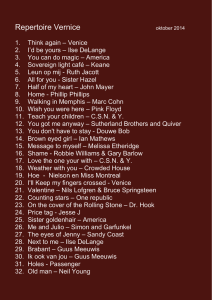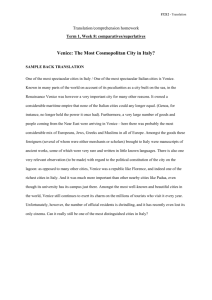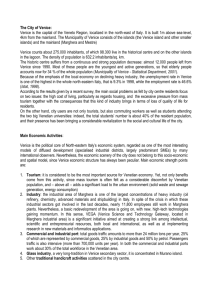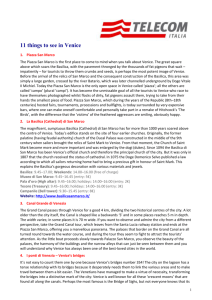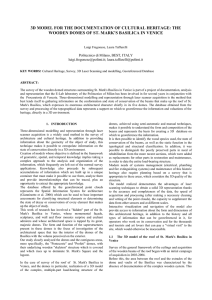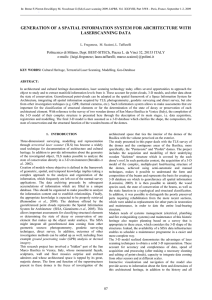Church of Venice
advertisement
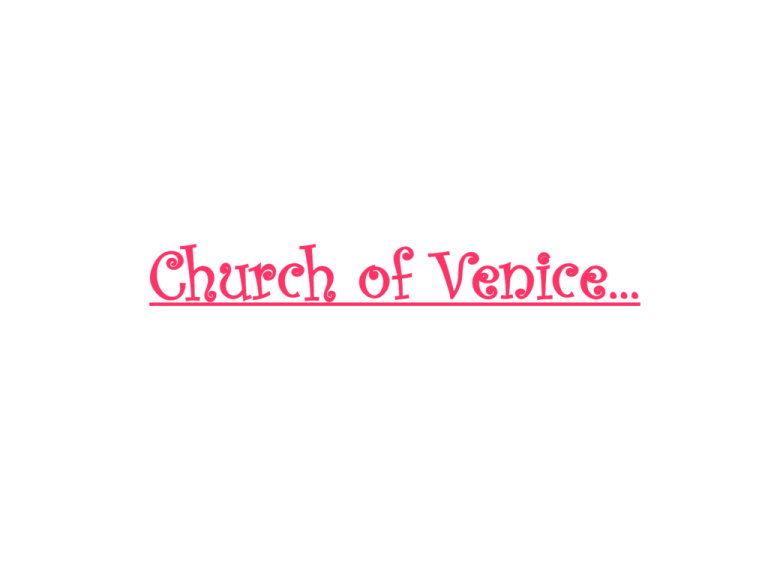
Church of Venice... St. Mark's Basilica The Patriarchal Cathedral Basilica of Saint Mark (officially known in Italian as the Basilica Cattedrale Patriachale di San Marco and commonly known as Saint Mark's Basilica) is the cathedral church of the Roman Catholic Archdiocese of Venice, northern Italy. It is the most famous of the city's churches and one of the best known examples of Byzantine architecture. It lies on Piazza San Marco (in the San Marco sestiere or district) adjacent and connected to the Doge's Palace. Originally it was the "chapel" of the Venetian rulers, and not the city's cathedral. Since 1807 it has been the seat of the Patriarch of Venice, archbishop of the Roman Catholic Archdiocese of Venice. For its opulent design, gilded Byzantine mosaics, and its status as a symbol of Venetian wealth and power, from the 11th century on the building was known by the nickname Chiesa d'Oro (Church of gold). Santa Maria dei Miracoli Santa Maria dei Miracoli is a church in the sestiere of Cannaregio, in Venice, Italy. Also known as the "marble church", it is one of the best examples of the early Venetian Renaissance including colored marble, a false colonnade on the exterior walls (pilasters), and a semicircular pediment. The main altar is reached by a series of steps. The circular facade windows recall Donato Bramante's churches in Milan. Built between 1481 and 1489 by Pietro Lombardo to house a miraculous icon of the Virgin Mary. The plans for the church were expanded in 1484 to include the construction of a new convent for nuns of St. Clare to the east. The convent was connected to the gallery of the church by an enclosed walkway that was later destroyed. The interior is enclosed by a wide barrel vault, with a single nave. The nave is dominated by an ornamental marble stair rising between two pulpits, with statues by Tullio Lombardo, Alessandro Vittoria and Nicolò di Pietro. The vaulted ceiling is divided into fifty coffers decorated with paintings of prophets, a work by Girolamo Pennacchi's contemporaries, Vincenzo dalle Destre and Lattanzio da Rimini. San Zanipolo The Basilica di San Giovanni e Paolo, known in the Venetian dialect as San Zanipolo, is a church in Venice, northern Italy. One of the largest churches in the city, it has the status of a minor basilica. After the 15th century the funeral services of all of Venice's doges were held here, and twenty-five doges are buried in the church. Santa Maria della Salute The Basilica of St Mary of Health (Italian: Basilica di Santa Maria della Salute), commonly known simply as the Salute, is a Roman Catholic church and minor basilica located in the Dorsoduro sestiere of the Italian city of Venice. It stands on a narrow finger of land between the Grand Canal and the Bacino di San Marco making the church visible when entering the Piazza San Marco from the water. The Salute is part of the parish of the Gesuati and is the most recent of the so-called Plague-churches. In 1630 Venice experienced an unusually devastating outbreak of the plague. As a votive offering for the city's deliverance from the pestilence, the Republic of Venice vowed to build and dedicate a church to Our Lady of Health (or of Deliverance, Italian: Salute). The church was designed in the then fashionable Palladian style by Baldassare Longhena, a pupil of the Venetian architect Andrea Palladio, and construction began in 1631. Most of the objects of art housed in the church bear references to the Black Death.
